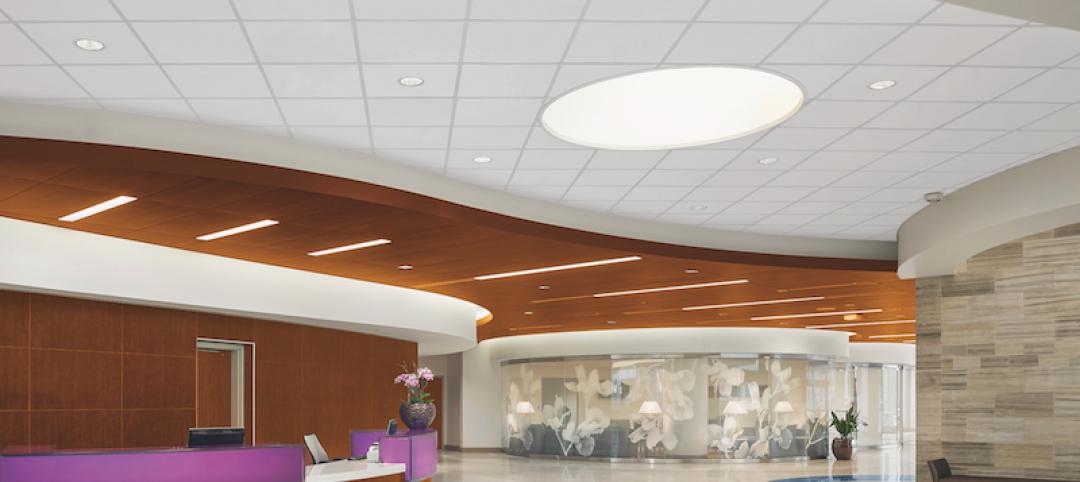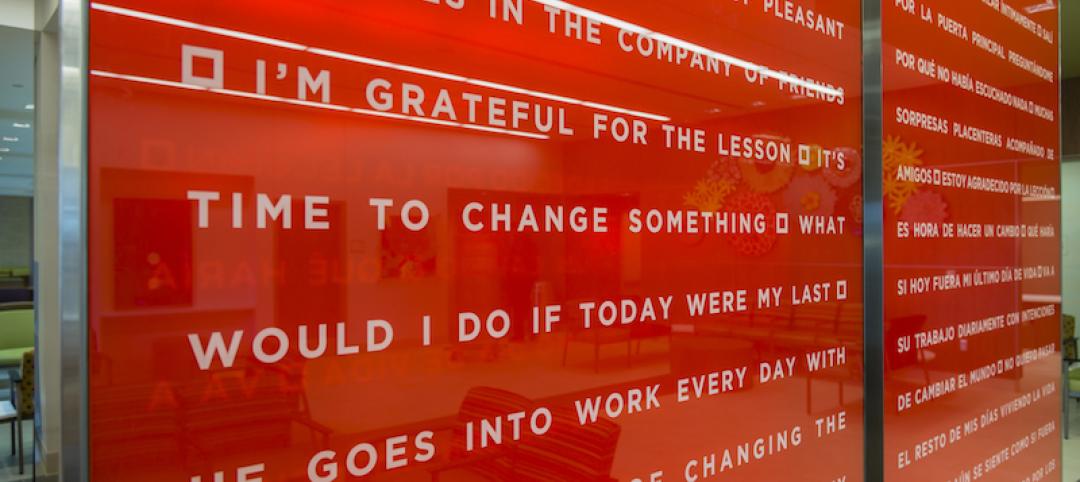Shortly before Mental Health Awareness Month in May, development and construction firm Skanska announced the topping out of California’s first behavioral health facility—and the largest in the nation—to target net zero energy. Located in Redwood City, San Mateo County, Calif., the 77,610-sf Cordilleras Health System Replacement Project is slated for completion in late 2024.
The campus will comprise four single-story mental health rehabilitation centers, each accommodating 16 clients, as well as a three-story co-housing building for 57 residents. With CannonDesign as the design architect, the buildings are arrayed around a central open space with sheltered outdoor seating, community gardens, and recreation areas. Cordilleras also will provide administration, medical, dining, and maintenance services, plus other staff and visitor services.
The project will generate onsite power by installing solar panels on the buildings’ roofs and the parking areas, offsetting the energy usage onsite. Through a design and modeling process, the project team was able to minimize the site’s power usage while maintaining occupant comfort. Cordilleras is targeting a Silver LEED certification and has the potential to achieve Gold.
Located on a wooded hillside south of San Francisco, Cordilleras preserves the existing natural environment and features biophilic design to support therapeutic healing. As a resilient facility, Cordilleras will be able to continue operations in the event of a natural catastrophe.
“More than 51 million Americans—approximately one in five adults—live with mental illness. As healthcare builders and designers, we can directly combat the stigma around seeking care in what was traditionally seen as cold, sterile treatment environments, as we expect to see increased demand for behavioral health facilities,” Lindsay Corotis, vice president/account manager, Skanska USA Building, said in a statement.
The original facility was constructed as a tuberculosis hospital in 1952 and adapted for behavioral health in 1978.
On the Building Team:
Owner: San Mateo County
Design architect and architect of record: CannonDesign
MEP engineer: CannonDesign
Structural engineer: KPFF
Construction: Skanska USA Building



Related Stories
Public Health Labs | Nov 3, 2016
Cutting-edge microscope facility opens on UMass Medical’s campus
Design and construction met rigorous requirements for sound, vibration, and temperature controls.
Healthcare Facilities | Oct 31, 2016
A world unbuilt: The moral implications of design
The communications challenges don’t even begin to compare to the inherent challenges of designing for a developing nation, writes CannonDesign's Michael McManus.
Sponsored | Healthcare Facilities | Oct 26, 2016
Rx for noise control at Virginia hospital: Large dose of acoustical ceilings
A myriad of acoustical ceiling solutions aid in patient comfort and recuperation.
Sponsored | Healthcare Facilities | Oct 24, 2016
Cyclotron streamlines isotope production
The 70 MeV, 140-ton cyclotron was manufactured by Ion Beam Applications (IBA) in Belgium.
Industry Research | Oct 20, 2016
New book from HDR explores opportunities for how healthcare organizations can reinvent the patient experience
Delta offers a close look at specific activities and behaviors that can help healthcare providers and caregivers discover revolutionary concepts to help them embrace and thrive in the rapid change that surrounds them.
Lighting | Oct 6, 2016
Healthcare systems lighting their way to savings
There has been a rapid improvement and availability of LED products as primary light sources in most healthcare facility applications.
Healthcare Facilities | Sep 28, 2016
Assisted living facility resembles a quaint American neighborhood
The design is not just meant to be aesthetically pleasing, but can also help patients with dementia and Alzheimer’s.
Healthcare Facilities | Sep 16, 2016
Healthcare architect turned patient: What I learned when admitted to a facility I helped design
Discovering new ways design can—and can’t—improve the patient experience.
Healthcare Facilities | Sep 14, 2016
Details of the largest healthcare construction project in North America revealed by CannonDesign and NEUF architect(e)s
The project will combine three aging hospitals into one complex.
Healthcare Facilities | Sep 7, 2016
The merger of physical healthcare and digital care: Why is it important?
As healthcare costs continue to increase, operators are exploring new delivery models and social platforms to personalize the provision of healthcare services. These companies are pouring resources into this field to create more personalized, secure, and affordable health and wellness options.

















